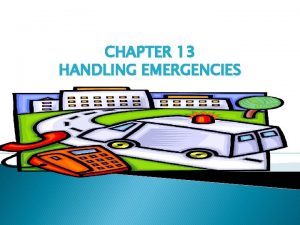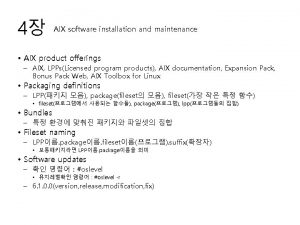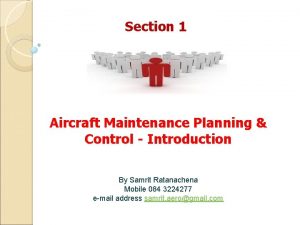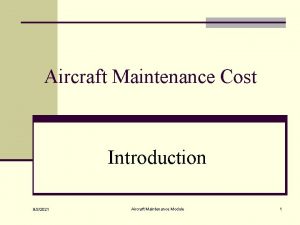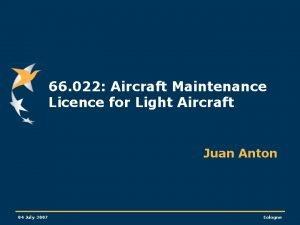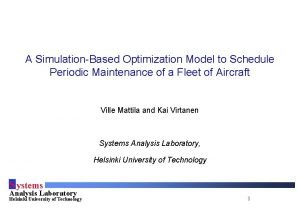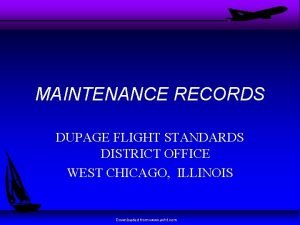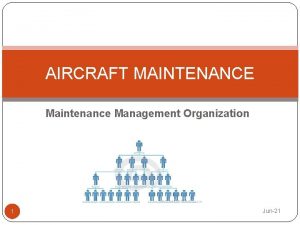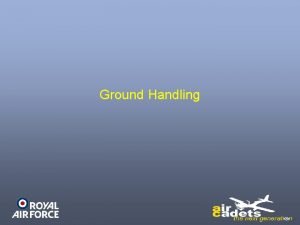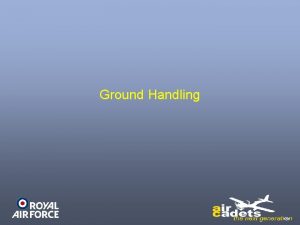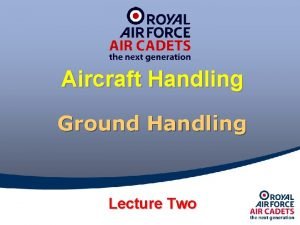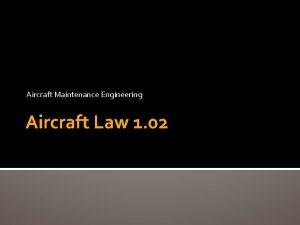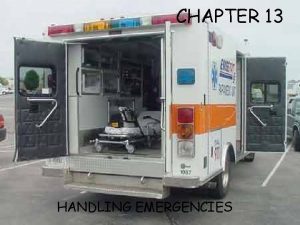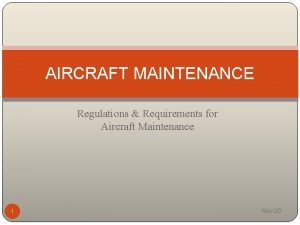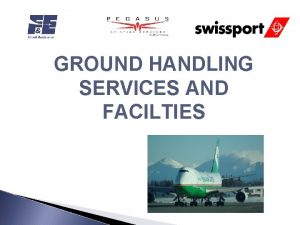Emergencies Recap Aircraft Maintenance Ground Handling Prep for











- Slides: 11

Emergencies

Recap • • • Aircraft Maintenance Ground Handling Prep for Flight General Flying Aero’s & Formation flying Emergency procedures

Emergency Procedures • Emergencies can happen at any time! • All aircrew must have knowledge of emergency procedures • Two degrees of emergency: – Distress: “The aircraft is threatened by serious or imminent danger and is in need of immediate assistance. ”. – Urgency: “The aircraft has a very urgent message to transmit concerning the safety of an aircraft, or of persons on board or within sight”.

Emergency Transmissions • In both cases the pilot must communicate with ATC by: – Radio Telephony - 243. 0 MHz (Main), 121. 5 MHz (Backup) – Wireless Telegraphy - 500 KHz HF • Distress – RT: Mayday, Mayday [Aircraft call sign] x 3 – WT: SOS, SOS [[Aircraft call sign] x 3 • Urgency – RT: Pan, Pan [Aircraft call sign] x 1 – WT: XXX, XXX [Aircraft call sign] x 1

PAT HAS ATNIE • Remembered by the pneumonic: PAT HAS ATNIE Position And Time [PAT] Heading and Air Speed [HAS] Altitude Type of Aircraft Nature of Emergency Intentions of Captain Endurance Remaining

Emergency Procedure and Fixer Service (1) • Secondary Surveillance Radar: – SSR is used to indicate an emergency – code 7600 indicates a total radio failure – If an emergency occurs when in contact with an ATC agency, the SSR code already set should remain in use unless advised otherwise by ATC. In all other cases the transponder should be set to code 7700. • Final Transmission – When ditching, crash landing or abandonment is imminent, the aircraft callsign should be transmitted and, where possible, the transmit control switch should be left in the transmit position. – For W/T the key should be clamped in the transmit position. These actions should not take priority over abandonment if life would be endangered by so doing.

Emergency Procedure and Fixer Service (2) • UHF Emergency Fixer Service – Within the UK FIRs a network of stations provide an emergency fixer service. – Emergency transmissions on 243 MHz are picked up by stations within range, and a bearing of the aircraft making the transmission from the station is automatically relayed to the ATCC – Accurate to 5000 feet – 8500 ft in Scottish FIR • SARSAT – Search And Rescue Satellite Aided Tracking – Any calls on emergency frequencies activate rescue services – False alarms should be reported ASAP to stand down ES • Cancellation – If emergency ceases call must be cancelled on all emergency frequencies used

Emergencies & other vehicle • Visual emergencies with other aircraft – – Keep aircraft in sight Guide in any other aircraft, vessels or vehicles Contact ground controller Captain to comply with special instructions from ground controller • Radio emergencies with other aircraft – – – Take bearing on transmission & plot position if possible Listen out on appropriate frequencies If no acknowledgement is heard, call aircraft Listen out for instructions from ground control At captains discretion, proceed to emergency location

Emergency Organisations • ATCC Distress & Diversion Cell – Aircrafts in distress may make contact with an ATCC or ATCRU by: • • transmitting an emergency message on the frequency in use, transmitting on the emergency frequency by a relay transmission from another aircraft by flying the triangular patterns – When the ATCC has identified an aircraft in distress, executive authority for the handling of the emergency is passed to the Emergency Controller in the ATCC Distress and Diversion Cell. • Search & Rescue Services – Emergency controller will advise the Rescue Co-ordination Centre (RCC) (2 x RCC in UK, Plymouth & Edinburgh) – The RCC co-ordinates the activities of all SAR facilities which may include: SAR helicopters, lifeboats, long range maritime patrol aircraft, mountain rescue teams and police and ambulance services.

Questions?

Check of Understanding
 Chapter 13 handling emergencies
Chapter 13 handling emergencies Lpps aircraft maintenance
Lpps aircraft maintenance Aircraft maintenance planning
Aircraft maintenance planning Maintenance goals and objectives
Maintenance goals and objectives Aircraft maintenance cost breakdown
Aircraft maintenance cost breakdown Flightlevel aviation aircraft maintenance
Flightlevel aviation aircraft maintenance Example of a log book
Example of a log book Licence 66
Licence 66 Aircraft maintenance schedule optimization
Aircraft maintenance schedule optimization Eddb aircraft maintenance
Eddb aircraft maintenance Dupage flight center aircraft maintenance
Dupage flight center aircraft maintenance Aircraft maintenance organization structure
Aircraft maintenance organization structure
